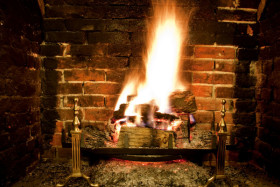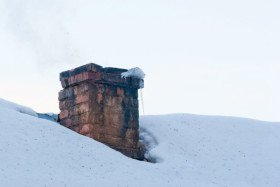The Dangers of Carbon Monoxide
You rely on your home heating appliances to keep your family warm and safe during the cold winter months. Whether you heat your home with a fireplace, fireplace insert, heating stove or furnace, you should be aware of the dangers and signs of carbon monoxide.
How carbon monoxide enters your home
A byproduct of combustion, deadly carbon monoxide can be produced by any furnace, stove or fireplace. Carbon monoxide can build up in your home if a heating appliance malfunction, or if your duct work or chimney becomes obstructed. Carbon monoxide poisoning is especially a concern in newer homes, which are more air tight, and in older homes that have newer heating appliances hooked up to older ventilation systems. Additionally, drafty older homes are often “winterized” to keep warm air in and prevent cold air from entering. While draft-free homes are more efficient, they also can allow carbon monoxide to build up when a heating appliance is improperly vented or malfunctioning.
Dangers of carbon monoxide in your home
At the very least, carbon monoxide in a home can cause flu like symptoms for the home’s inhabitants, including headaches, dizziness or fatigue. As it progresses, it can cause confusion or cause people to lose consciousness. More than 400 people die in the United State each year from carbon monoxide poisoning. An additional 20,000 people visit the emergency room, and more than 4,000 are hospitalized because of carbon monoxide poisoning each year. If anyone in your home is experiencing symptoms of carbon monoxide poisoning, everyone should leave the house and the fire department should be called.
Detecting carbon monoxide
The best way to protect your family from carbon monoxide poisoning is to install carbon monoxide detectors on each floor of you home and within 10 feet of all bedroom doors. The carbon monoxide detectors you select should carry a seal of approval from a reputable testing laboratory. Follow the manufacturer’s instructions for installation, and be sure to check carbon monoxide detectors and replace batteries regularly. If carbon monoxide detectors sound in your home, immediately make sure that everyone exits the home, and call 911.
Preventing carbon monoxide buildup
Your home heating systems inspected annually by a professional. Your annual chimney sweeping will ensure that your chimney is free from soot, animal nests or other debris that can prevent carbon monoxide from leaving your fireplace or stove. Fireplaces, stoves and furnaces should be cleaned and inspected to make sure they are venting and operating properly. During your annual cleaning and inspection, your technician also will verify that your chimney or ventilation system is properly sized and fitted to your furnace, fireplace or stove.
If your fireplace, chimney, stove or furnace is overdue to be cleaned and inspected by a professional, call to schedule your appointment today! Regularly servicing of your heating appliances and ventilation system is the best way to keep your family safe from the dangers of carbon monoxide poisoning.


